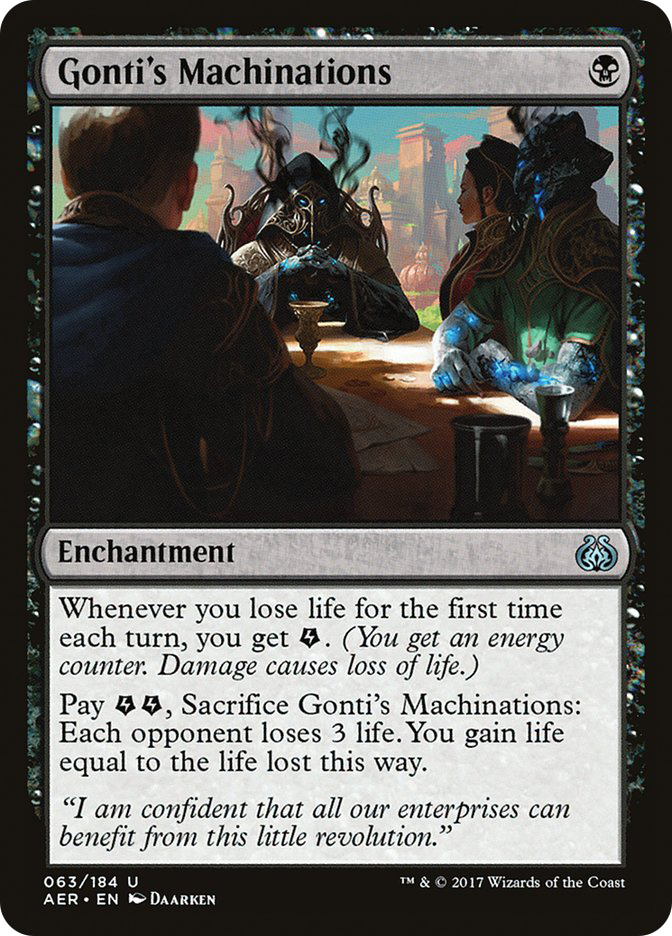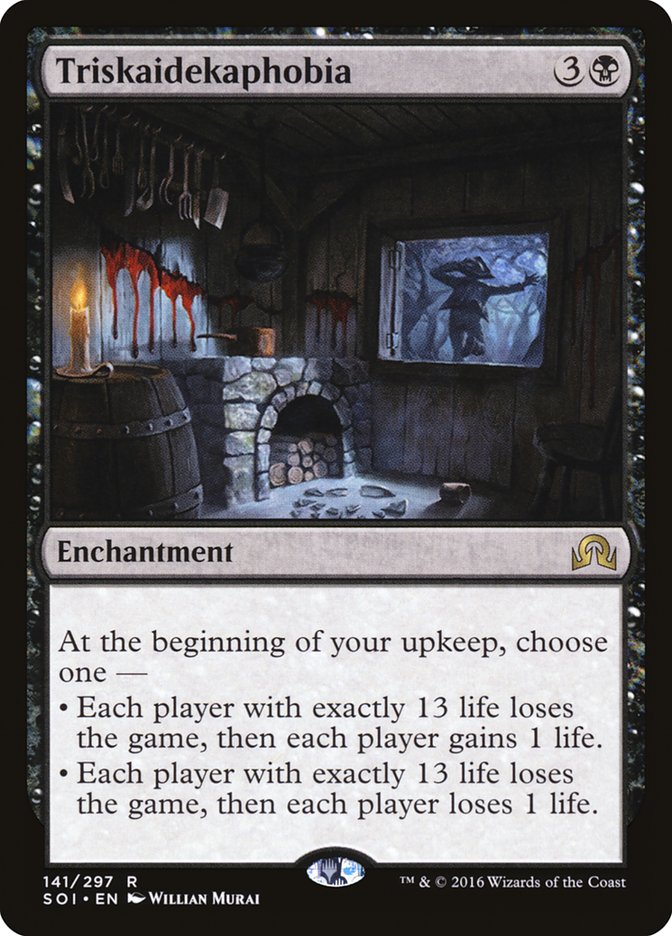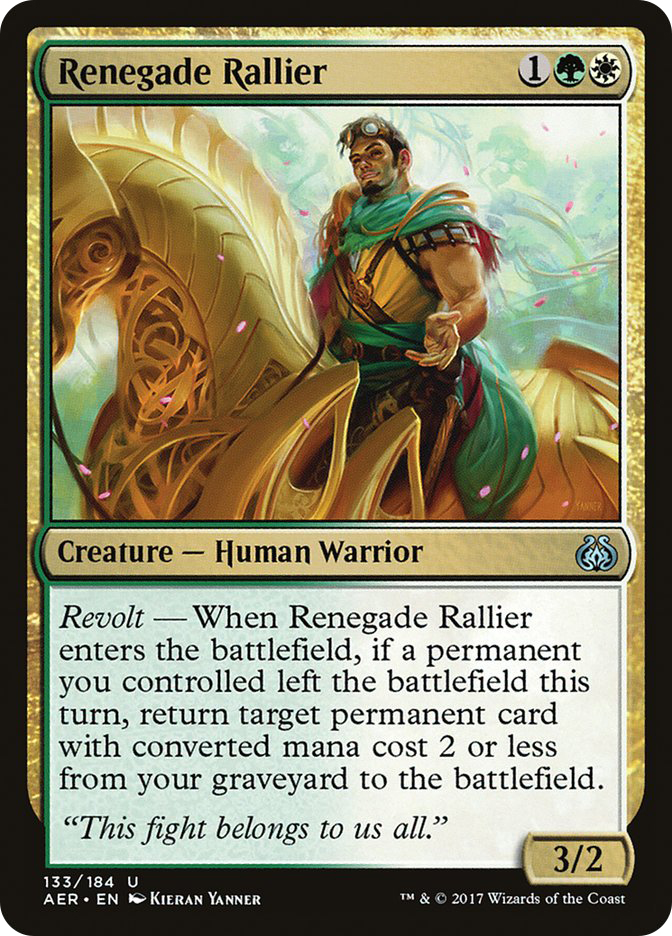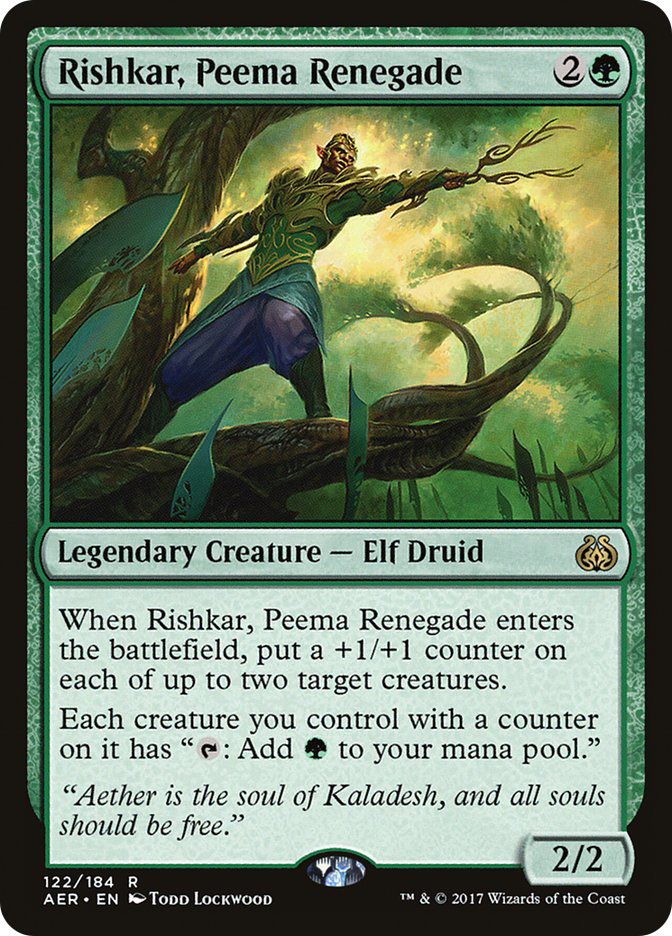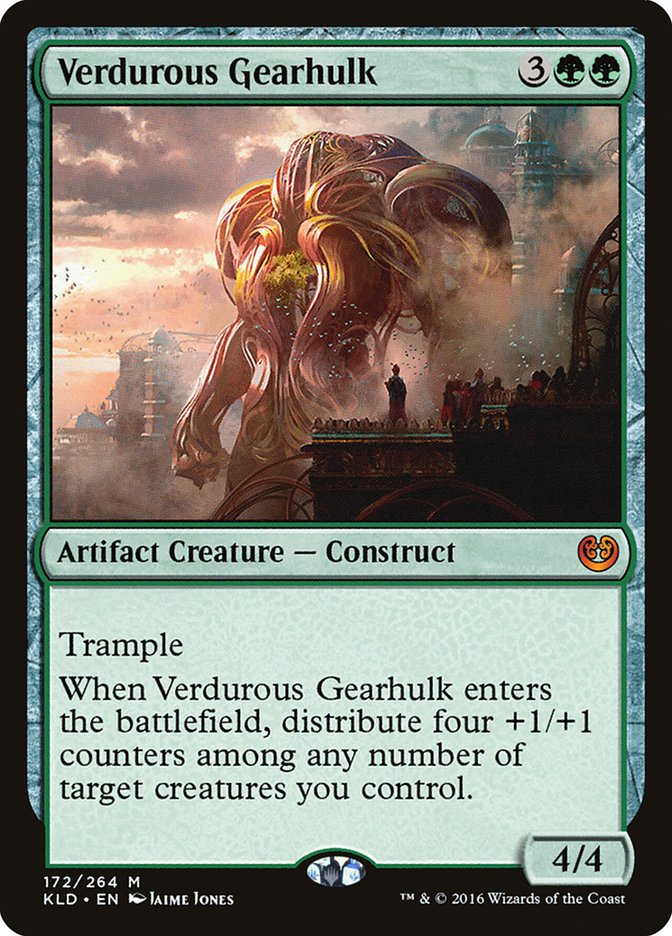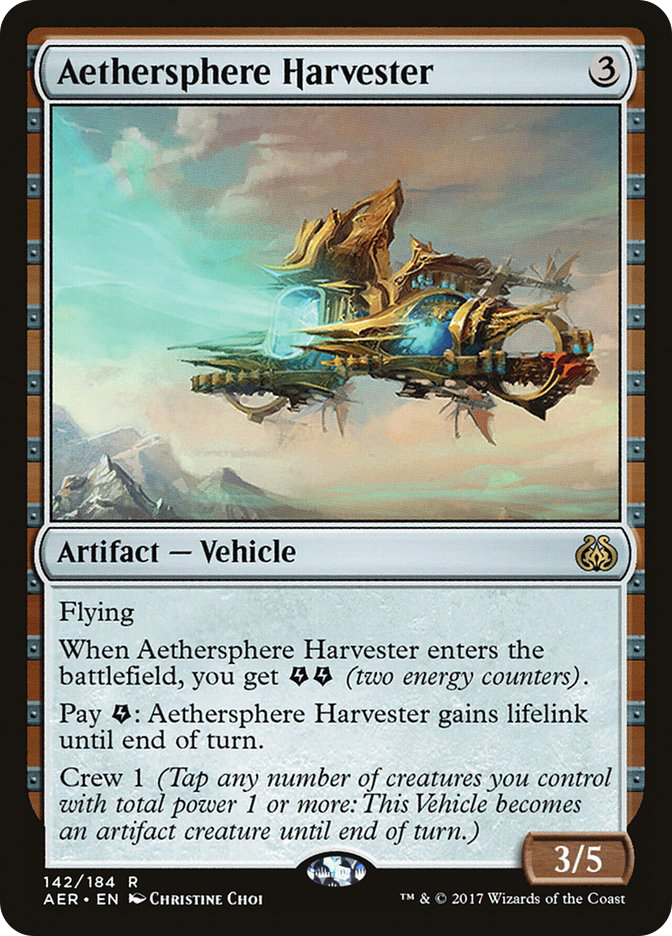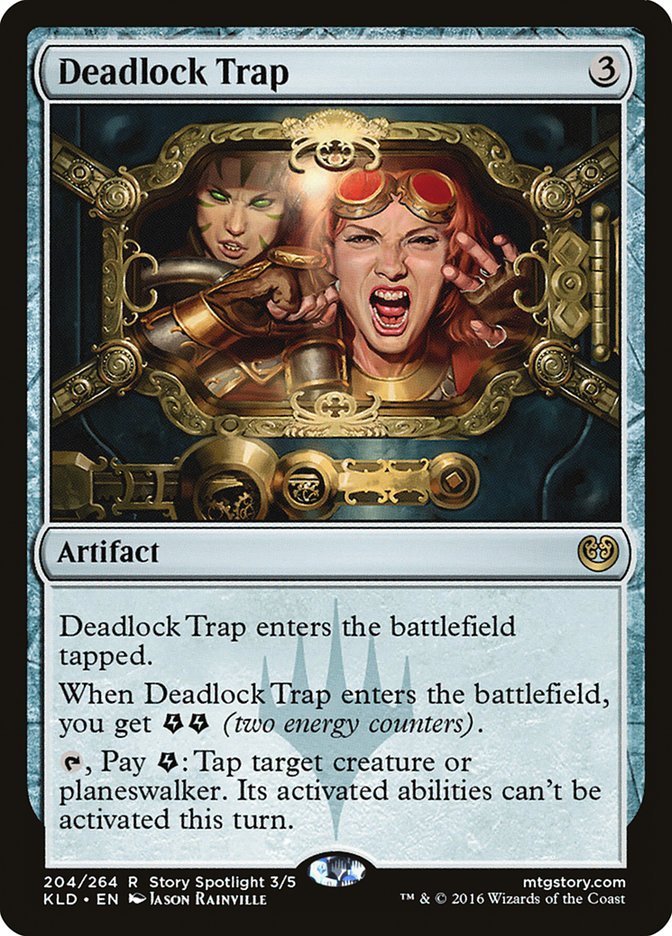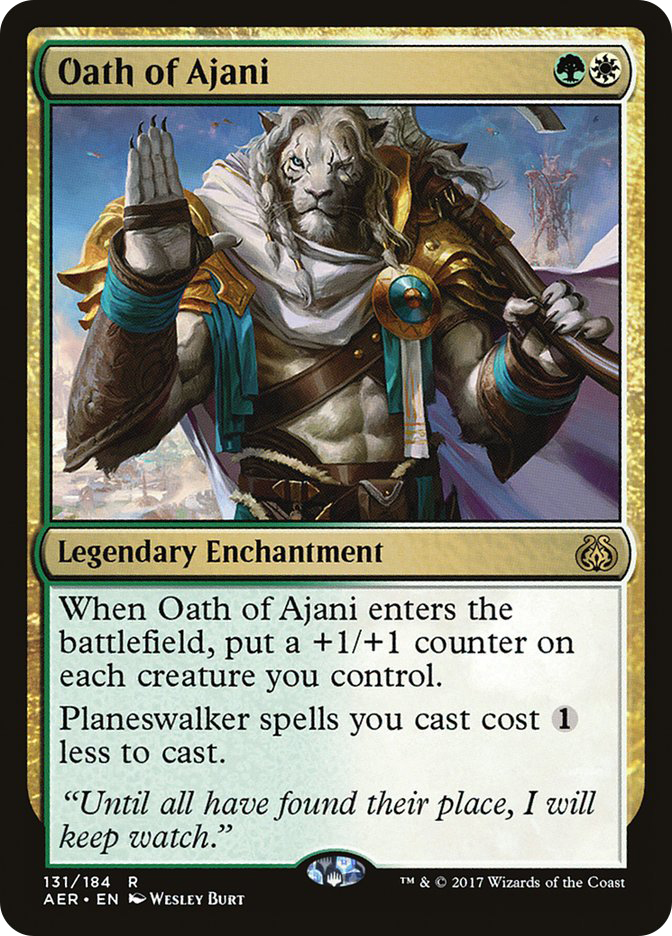Small sets like Aether Revolt tend to have more role-players than all-stars, but even some of those get lost. We have a tendency to browse the rares, or mythic rares as the case may be, to find the best cards in the set. The rest get ignored as a thirteenth-pick draft card, or they are slid to the side as you peek through a booster for the pack’s rare. Poor role-players. Where’s your day in the sun? When do you receive the same attention as Heart of Kiran, Grim Flayer, and Saheeli Rai?
We may be waiting a long time for that day, but until then, we can search in the depths of Aether Revolt for something new. Most of the decks running around these days line up with one of a handful of archetypes: Three- or Four-Color Energy, Saheeli Rai / Felidar Guardian combo decks, improvise decks (either Aetherflux Reservoir or an alternative combo), or aggro, whether by Vehicles or Grim Flayers. This is, admittedly, a broad category. But you know what I don’t see in there? Burn, or, as the case may be today, life drain.
Take a second to read this little puzzler; you may not have seen it in a single deck since Aether Revolt released, and chances are it didn’t likely make a Limited deck, either. No, Gonti’s Machinations is a clumsy Alms of the Vein, a low-impact, tricky-to-use enchantment that is easy to overlook. I did for weeks before stumbling upon it.
Gonti’s Machinations, as with many role-players, has a few functions, synergies, and advantages over other, more broad-brush threats. Gonti’s Machinations is a cheap, reliable, and repeatable way to get energy, something that many energy decks are interested in doing. It does not cost any additional mana once played, and its sacrifice cost is mana-free and low in energy, meaning it’s easy for your opponent to forget about it, and you can trigger revolt instantly without spending mana. The life drain is a nice touch, and it helps you close the door if your opponent is on the edge of stabilizing.
This enchantment has been on my plate for a few weeks now, and I’ve drafted a couple of different decks. The first involved a dedicated, energy-focused burn package with the likes of Harnessed Lightning (which only hits creatures, sadly…can you imagine?). Black and red have plenty of spells to put you towards burn, including the wildly successful Unlicensed Disintegration. As I started to make the deck, I quickly realized it was as bland as white bread. The deck had no nuance, no enjoyment at all.
If Gonti’s Machinations doesn’t go in a burn deck, though, where does it belong?
I thought you’d never ask.
In contention for the most flavorful card in Standard, Triskaidekaphobia was a card I flocked to shortly after it was first released, discussed here. At the time, wanting Triskaidekaphobia to be a viable win condition was a bit of a pipe dream; Magic Origins contained reprints of the so-called “painlands,” ubiquitous two-colored lands like Caves of Koilos and Shivan Reef that allowed an opponent to safely avoid Triskaidekaphobia’s life total requirement without much effort at all. These lands no longer exist in Standard; only a couple of lands perform a similar function today, and they’re only present in certain decks.
Gonti’s Machinations don’t have much point outside of a burn deck…unless you only need to do seven damage to them.
If we’re running an enchantment that can kill us too, it would behoove us to play cards that allow us to manipulate our life, either to increase or decrease it at will. Thankfully, one card lines up perfectly with both aspects of Gonti’s Machinations: Glint-Sleeve Siphoner.
This energy-focused Dark Confidant does everything we like: it draws us deeper, drains our life, and replaces the energy it takes, giving us a considerable amount of consistency. The evasiveness is a nice way to get our opponent reliably close to thirteen life.
Other cards came to mind: Cryptolith Fragment, Metalspinner’s Puzzleknot, and even a great recursion tool.
Being two completely separate colors was a hassle, to be sure, but Renegade Rallier could recover the sacrificed Gonti’s Machinations…or any artifact, creature, enchantment, or land below its converted mana cost threshold. Thankfully,
My first version of the deck looked like this.
Creatures (13)
Lands (21)
Spells (26)

Looks okay, right? No? Yeah, it wasn’t great.
This was where I was looking first, focusing on life drain and getting to a Triskaidekaphobia kill ASAP. The deck produced enough energy that going down a path that included Aetherworks Marvel, and a potentially instant-speed, no-cost Triskaidekaphobia was exciting.
I tested this solitaire-style first before sleeving it up. Alas, after only a couple of iterations, I found the deck hilariously inept, clumsy, and utterly unplayable.

A veritable dumpster fire.
Fatal Push had to pull much more than its weight, as the deck was too low pressure to require my opponent to spend resources on other things. Instead, they could throw everything they had at me and I’d buckle quickly. The deck relied utterly on Triskaidekaphobia, which proved painfully inconsistent. Nothing feels like having two copies of Triskaidekaphobia in your hand while they’re at eighteen life…and you’re at two.
It seems that Gonti’s Machinations would require a sturdier creature base to support it on its way to Triskaidekaphobia. Moreover, it may be fair to insist on it to pull more weight than Triskaidekaphobia, which is probably a reasonable ask.
Although the deck went through three iterations, each with testing, this final version is the one I’m happiest with. The first deck is listed to show what a transformation a deck can undergo in refining.
Creatures (27)
- 3 Thraben Inspector
- 2 Verdurous Gearhulk
- 3 Servant of the Conduit
- 4 Winding Constrictor
- 3 Rishkar, Peema Renegade
- 4 Glint-Sleeve Siphoner
- 3 Renegade Rallier
- 4 Walking Ballista
- 1 Restoration Specialist
Lands (21)
Spells (12)

This deck contains lots of familiar cards, and it has the option to go a much more conventional route. However, the underlying plan of the deck is still the same: lower my opponent’s life total, whether that’s be attacking with overwhelming creatures or to hang back; chip away at their life; and then spring the Triskaidekaphobia trap.
Creatures
Thirteen creatures, while thematically relevant, was too few for this deck to function effectively. This new version features 27.
Walking Ballista walked right past me. Controlling combat and life loss to get your opponent to exactly thirteen is like trying to fillet a smallmouth bass with a battleaxe; move too fast or too hard and you’ll obliterate the poor thing. Walking Ballista, while being a reasonable force in and of itself, is a scalpel, providing precision and revolt triggers. I can even smack myself for energy with Gonti’s Machinations or to dodge Triskaidekaphobia.
Winding Constrictor was a no-brainer. Each trigger from Aether Hub, Glint-Sleeve Siphoner, Gonti’s Machinations, and even Aetherworks Marvel gets a boost from this little Snake. The deck leverages abilities that Winding Constrictor helps, and good old Renegade Rallier can get it back. Now that we’re deeper in on three colors, Servant of the Conduit gets a good upgrade. Nearly everything in this deck can be easily cast on turn 3 with a Servant.
Rishkar, Peema Renegade is a superstar. +1/+1 counters are frequent enough and there are enough interactions with them that both the power and toughness boost and the mana boosts are important. Using the extra mana to crack Clues or activate Walking Ballista are all winning ways to leverage Rishkar. Thraben Inspector, while not flashy, provides an early artifact for Spire of Industry and gives ample opportunity for revolt. Renegade Rallier was originally a playset, but I slid in one copy of Restoration Specialist to balance out the set. Restoration Specialist can get some of the deck’s most powerful spells back, including Triskaidekaphobia, if needed. It costs two mana, meaning Renegade Rallier can return it. Sacrifice it again and then use another Rallier to rebuild your hand!
Finally, Verdurous Gearhulk closes the door. Hard. When your opponent’s not prepared, slam this bruiser down, give yourself four extra power (or eight if you have one Winding Constrictor on the battlefield and four creatures), and blast them away.
Spells
Fatal Push remains an excellent tool, but it’s much more multifaceted now. It’s an efficient addition to a turn, and it can be used offensively or defensively now, thanks to an army of our own. It’s the only instant in the maindeck; the rest of the spells are permanents in order to interact with Restoration Specialist and Renegade Rallier.
Gonti’s Machinations went from four copies, to three, to one, to two. I found I never wanted more copies until I had just one, and two felt perfect. They can be recurred, but having more than one in your opener can be a bit unwieldly. Two really is just right. Sinister Concoction does everything we like; it puts cards in the graveyard, triggers revolt, drains one life to trigger Gonti’s Machinations, and kills a creature. It can be recurred, and was over the course of my testing!
I tried Implement of Improvement and, less successfully, Implement of Ferocity, but both of these still required a commitment of mana without fixing the deck’s bigger problem: consistency. Terrarion came in to replace the final copies of each, and I’ve been much happier with their effects. Aethersphere Harvester is a perfect one-of; any creature can crew it, it provides and uses energy well, and it’s a high-toughness creature that can block even powerful attackers like Grim Flayer and Heart of Kiran.
Although I loved the idea of Aetherworks Marvel and Triskaidekaphobia being the deck’s engine, at the end of the day, the other parts of the deck were more reliable. Still, Aetherworks Marvel has plenty of ways to trigger for energy gain, and keeping the power level high means that activating the Marvel is always going to do something good for you, whether an instant-speed Renegade Rallier or an Verdurous Gearhulk mid-combat or at end step. Triskaidekaphobia is mediocre in multiples, but there are still a nonzero number of times where this is your only out, and I’m happy to keep it slotted, and not just out of posterity; it is a reasonable, although infrequent, way out of a jam.
Lands
The manabase was difficult to nail down, but this about where I like it. The deck is inexpensive, and cards like Rishkar, Peema Renegade help in the late-game. Even post-sideboard, 21 lands is just about right.
Evolving Wilds is a gem for Renegade Rallier; it can get the Wilds back, help you ramp, and trigger revolt on its own. Spire of Industry, as helpful as it is, was too unreliable as a full playset. Running three gives you one, but just one, when you need it to help you fix or gain counters with Gonti’s Machinations.
Sideboard
This sideboard offered diverse answers to problematic decks and different situations. The deck, with its Glint-Sleeve Siphoner, Clue production, and considerable flexibility, lets us create a toolbox sideboard that, after narrowing it down to these fifteen cards, has proven successful.
Deadlock Trap is a nice way to keep a planeswalker or creature tied up for the foreseeable future. This deck has more than enough ways to produce sufficient energy to delay your opponent’s best threat for long enough for you to close things up. Anguished Unmaking, combined with the deck’s lifegain, is an effective, brutal removal spell that gets whatever you need gone, gone. Similarly, Painful Truths takes your plentiful life and turns it into more threats against decks that wish to outpace you in card advantage.
Tireless Tracker works with many different levels of the deck, too: it gives Clues, so Spire of Industry is happy; the +1/+1 counters it gains can be doubled thanks to Winding Constrictor; and you can tap it for mana to crack your Clues with Rishkar, Peema Renegade. Isn’t synergy great? Two other creatures feature here. Scrapheap Scrounger plays off the deck’s 27 creatures for you to have plenty of fodder to recur it. Ishkanah, Grafwidow is the perfect answer for a battlefield state gone wrong. Rishkar, Peema Renegade can help fuel its Spider activated ability, too.
Finally, the planeswalker package provides a nice alternative plan that doesn’t disrupt your deck’s composition to accommodate them. Oath of Ajani works with the deck’s +1/+1 counter theme, and it can also be recurred by Renegade Rallier and Restoration Specialist. Liliana, the Last Hope is perhaps the planeswalker best-suited to the deck, as it gives you a way to recover Renegade Rallier, Verdurous Gearhulk, and Walking Ballista. Her plus ability buys you time from a top-heavy deck, too. Ob Nixilis Reignited triggers Gonti’s Machinations, and his no-nonsense -3 ability gets what Fatal Push can’t. Sorin, Grim Nemesis is an exceptional curve-topper, especially when it comes down up to two turns early with Oath of Ajani and Servant of the Conduit. This also lets you gain life for other spells that take it.
I tested this exact deck for ten matches on Magic Online and won seven of them. The three losses were to two Temur Energy decks and a B/G Delirium deck, two known quantities in today’s metagame. I was thrilled with the deck’s flexibility and breadth, and the card quality kept the game’s exciting. Gonti’s Machinations, while not the star I had originally hoped for, returned to its true position: a role-player. And at that, my friends, it excelled.
How can this deck adjust to beat those two menaces of Standard? In what ways have you used Gonti’s Machinations?


